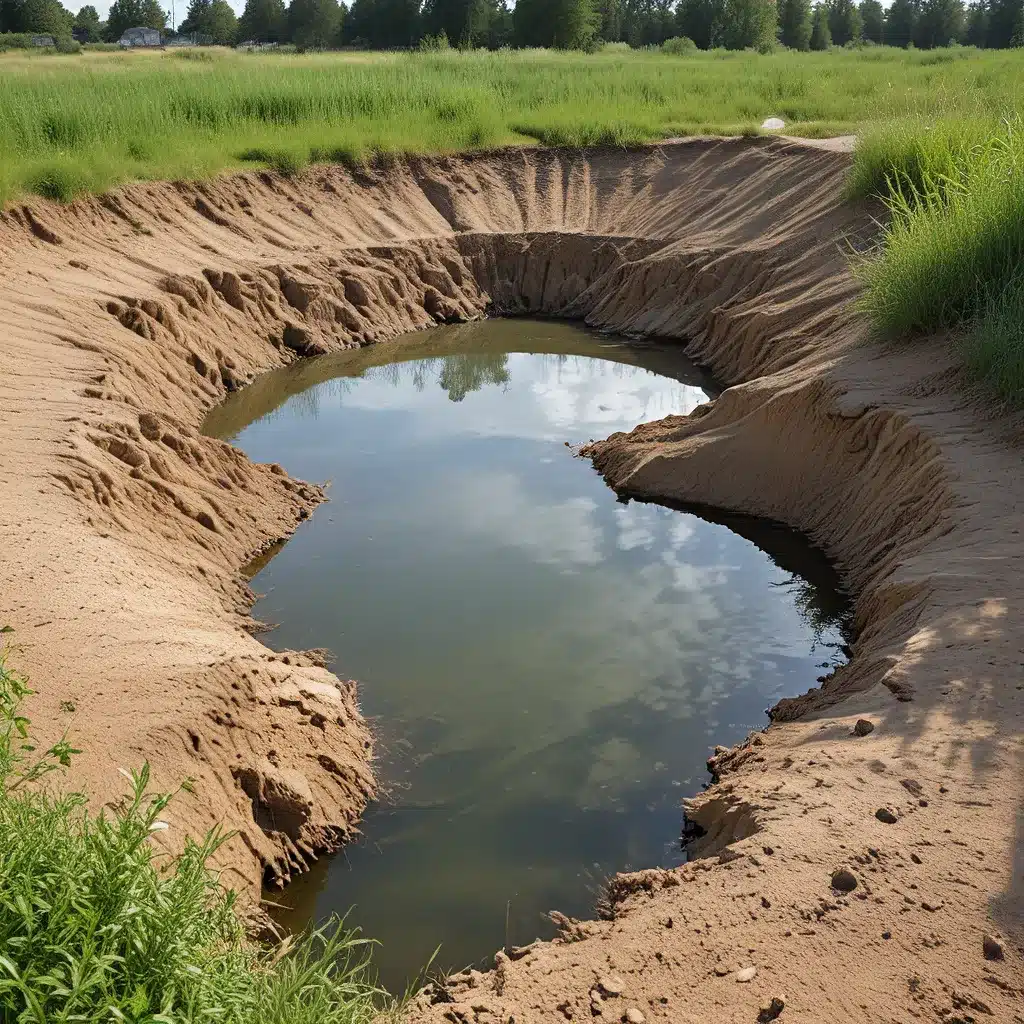
Imagine a world where the solutions to our environmental challenges didn’t just come from complex machinery and engineering feats, but from the very essence of nature itself. Well, my friends, that world is closer than you might think. Welcome to the realm of groundwater remediation reimagined, where nature-based solutions are leading the charge in revolutionizing the way we approach environmental restoration.
Unlocking the Power of Nature
As someone who has been fascinated by the intricate workings of our planet for as long as I can remember, I’ve always been in awe of the incredible resilience and adaptability of natural systems. It’s a wonder that never ceases to amaze me. And when it comes to tackling the complex issue of groundwater contamination, I believe the answers we’ve been searching for have been right under our noses the whole time.
Nature-based solutions, as they’re often called, are innovative approaches that harness the inherent power of natural processes to address a wide range of environmental challenges. From constructed wetlands that filter and purify water to phytoremediation techniques that use plants to extract and break down contaminants, the possibilities are truly endless.
Embracing the Gentle Giants
One of the most fascinating aspects of nature-based solutions for groundwater remediation is the role of wetlands. These gentle giants of the natural world are not just picturesque landscapes; they are powerhouses of water purification and contaminant removal. Wetlands can effectively remove a wide range of pollutants, including heavy metals, organic compounds, and even some types of pharmaceuticals and pesticides, all through the intricate interplay of plants, microbes, and the natural filtration processes that occur within these vibrant ecosystems.
Recent studies have shown that constructed wetlands can be a highly effective and cost-efficient solution for groundwater remediation, particularly in areas where traditional engineering-based approaches may be impractical or prohibitively expensive. By replicating the natural filtration processes of wetlands, these engineered systems can help restore the health and purity of contaminated groundwater, all while providing a host of additional benefits like habitat creation, carbon sequestration, and recreational opportunities.
Harnessing the Roots of Change
But wetlands aren’t the only nature-based solution in our arsenal. Another fascinating approach is the use of phytoremediation, which harnesses the power of plants to extract, sequester, or break down contaminants in the soil and groundwater. Certain species of plants, like willow trees and sunflowers, have an incredible capacity to absorb and metabolize a wide range of pollutants, from heavy metals to organic compounds.
By strategically planting and managing these “pollution-eating” plants, we can create living, breathing systems that continuously work to purify and restore contaminated groundwater. And the best part? These nature-based solutions are often more cost-effective, environmentally friendly, and aesthetically pleasing than traditional pump-and-treat or chemical remediation methods.
Collaboration Meets Innovation
Of course, the journey to groundwater remediation reimagined isn’t one that any single individual or organization can undertake alone. It requires a collaborative effort, with researchers, environmental experts, and innovative thinkers coming together to push the boundaries of what’s possible.
That’s where initiatives like the Environmental Venture Projects (EVP) program at the Stanford Woods Institute for the Environment come into play. By providing seed grants for interdisciplinary research teams, the EVP program is helping to catalyze the development of transformative environmental solutions, including groundwater remediation approaches that harness the power of nature.
Through these collaborative efforts, we’re seeing the emergence of cutting-edge technologies and innovative methodologies that are redefining the way we think about environmental restoration. From the development of natural resources valuation software to the creation of biodegradable building materials, the possibilities are truly endless.
A Future Reimagined
As I look to the horizon, I can’t help but feel a sense of excitement and optimism about the future of groundwater remediation. By embracing nature-based solutions and harnessing the incredible resilience and adaptability of natural systems, we have the power to not just clean up our contaminated groundwater, but to restore it to a state of vibrant health and vitality.
Of course, the journey ahead won’t be without its challenges. There will be obstacles to overcome, skeptics to convince, and complex regulatory frameworks to navigate. But I firmly believe that by working together, by tapping into the collective wisdom and creativity of researchers, environmental professionals, and the broader community, we can reimagine the future of groundwater remediation and create a more sustainable, resilient, and ecologically harmonious world.
So, let’s roll up our sleeves, get our hands a little dirty, and dive headfirst into the fascinating world of nature-based solutions for groundwater remediation. The future is ours to shape, and it’s going to be one heck of a ride.


